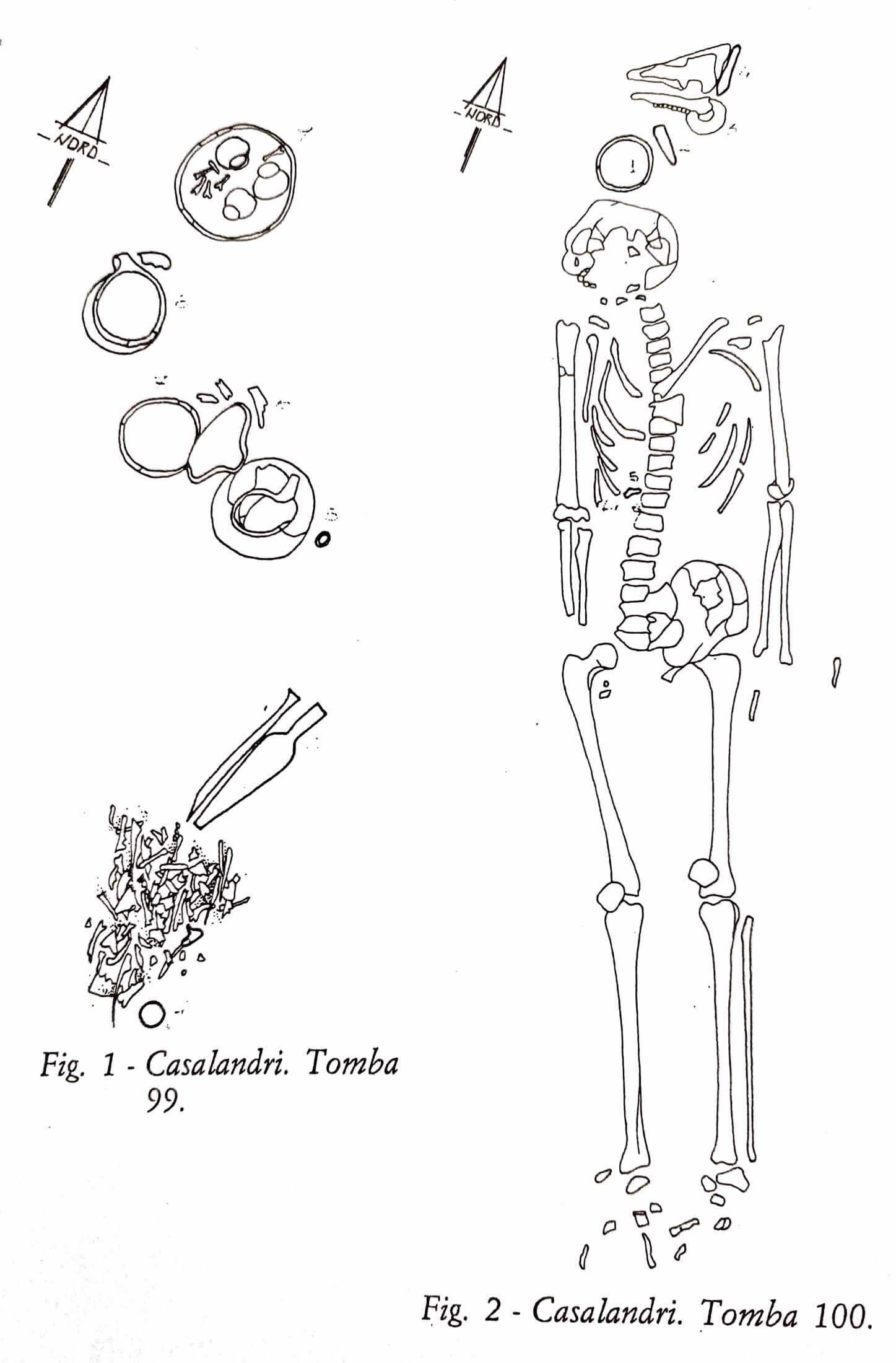Archaelogical Contexts | Casalandri Isola Rizza
The Celtic necropolis of Casalandri Isola Rizza (province of Verona)
The Celtic necropolis of Casalandri in Isola Rizza (province of Verona) was excavated in three campaigns between 1982 and 1984 prior to building construction and brought to light 112 burials. The size of the necropolis is ca. 4300 m2.
The necropolis is dated to the 2nd and 1st centuries BC. Only a few graves located in the centre and NW edge of the necropolis date to the La Tene C2 period.
The funerary rites are mostly incinerations but also a few inhumations and are buried in simple pits.
The necropolis is dated to the 2nd and 1st centuries BC. Only a few graves located in the centre and NW edge of the necropolis date to the La Tene C2 period.
The funerary rites are mostly incinerations but also a few inhumations and are buried in simple pits.

Fig.1: Plan of grave 99 and grave 100 of Casalandri Isola Rizza (modified from Salzani, L. 1985. Casalandri (Comune di Isola Rizza-Verona). Quaderni di Archeologia del Veneto I: 45-46).
Grave goods are not numerous and include few weapons, apart from a limited number of burials with spears, swords, shield bosses, knives and axes. Wine-serving vessels are widespread, with the presence of situlae, pans, jars, ladles and strainers, and banqueting vessels with the presence of spits, kreagras and ceramic vessels containing animal offerings. There are also numerous offers of coins. Female grave goods include spindle-whorls , glass paste beads and brooches.
In the context of the Celtic presence in the plains to the south of Verona, the necropolis of Casalandri is part of a group of funerary sites, such as S. Maria di Zevio and S. Pietro di Morubio, along the ancient course of the river Adige. They document the contacts and exchanges between the Celtic populations and the neighbouring Paleovenetian centres such as Montagnana and Arqua Petrarca.


